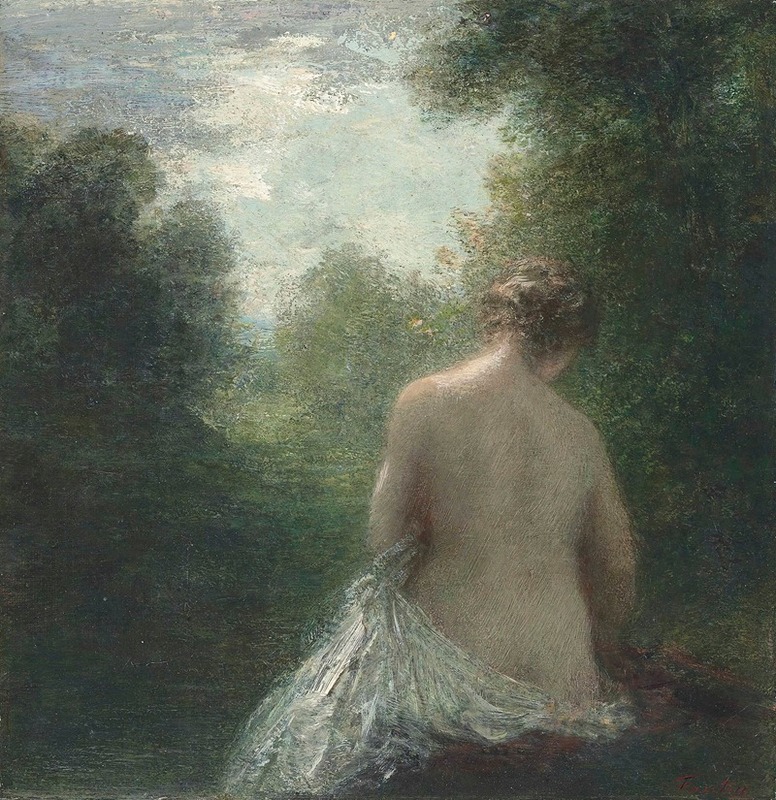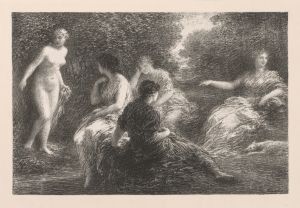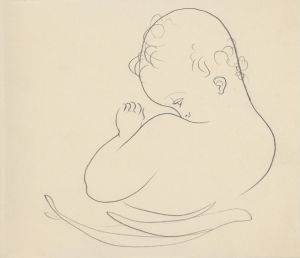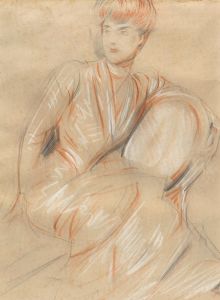
Baigneuse assise de dos
A hand-painted replica of Henri Fantin-Latour’s masterpiece Baigneuse assise de dos, meticulously crafted by professional artists to capture the true essence of the original. Each piece is created with museum-quality canvas and rare mineral pigments, carefully painted by experienced artists with delicate brushstrokes and rich, layered colors to perfectly recreate the texture of the original artwork. Unlike machine-printed reproductions, this hand-painted version brings the painting to life, infused with the artist’s emotions and skill in every stroke. Whether for personal collection or home decoration, it instantly elevates the artistic atmosphere of any space.
Henri Fantin-Latour, a renowned French painter and lithographer, is celebrated for his exquisite still lifes and portraits. Among his diverse body of work is the painting "Baigneuse assise de dos," which translates to "Seated Bather, Back View." This artwork exemplifies Fantin-Latour's skillful approach to capturing the human form and his dedication to realism.
Henri Fantin-Latour was born on January 14, 1836, in Grenoble, France. He received his artistic training at the École des Beaux-Arts in Paris, where he studied under the tutelage of several prominent artists of the time. Although he was contemporaneous with the Impressionists and even associated with them, Fantin-Latour maintained a more traditional approach to painting, focusing on realism and detail rather than the loose brushwork and vibrant color palette characteristic of Impressionism.
"Baigneuse assise de dos" is a testament to Fantin-Latour's classical influences and his ability to render the human body with precision and sensitivity. The painting depicts a nude female figure seated with her back to the viewer. This composition allows the artist to explore the contours and musculature of the human form, emphasizing the play of light and shadow across the skin. The choice of depicting the figure from behind adds an element of introspection and privacy, inviting the viewer to appreciate the beauty of the human body without the distraction of facial expression or direct engagement.
Fantin-Latour's technique in this painting is meticulous, with careful attention to the texture of the skin and the subtle gradations of tone. The background is typically subdued, ensuring that the focus remains on the figure itself. This approach is consistent with his other works, where he often employed a restrained color palette to highlight the subject matter.
Throughout his career, Fantin-Latour was known for his ability to capture the essence of his subjects, whether in portraiture or still life. His portraits often conveyed a sense of intimacy and psychological depth, while his still lifes were celebrated for their compositional harmony and attention to detail. "Baigneuse assise de dos" fits within this oeuvre as an exploration of form and an exercise in the depiction of natural beauty.
While Fantin-Latour is perhaps best known for his flower paintings and group portraits of artists and musicians, works like "Baigneuse assise de dos" demonstrate his versatility and his commitment to the study of the human figure. His paintings were well-received during his lifetime, and he exhibited regularly at the Salon in Paris. Despite his association with the avant-garde artists of his time, Fantin-Latour remained committed to his own artistic vision, which was rooted in the traditions of the Old Masters.
Henri Fantin-Latour passed away on August 25, 1904, in Buré, France. His legacy endures through his extensive body of work, which continues to be celebrated for its technical proficiency and its ability to capture the quiet beauty of everyday subjects. "Baigneuse assise de dos" remains a fine example of his skill in rendering the human form and his dedication to the principles of realism.


















